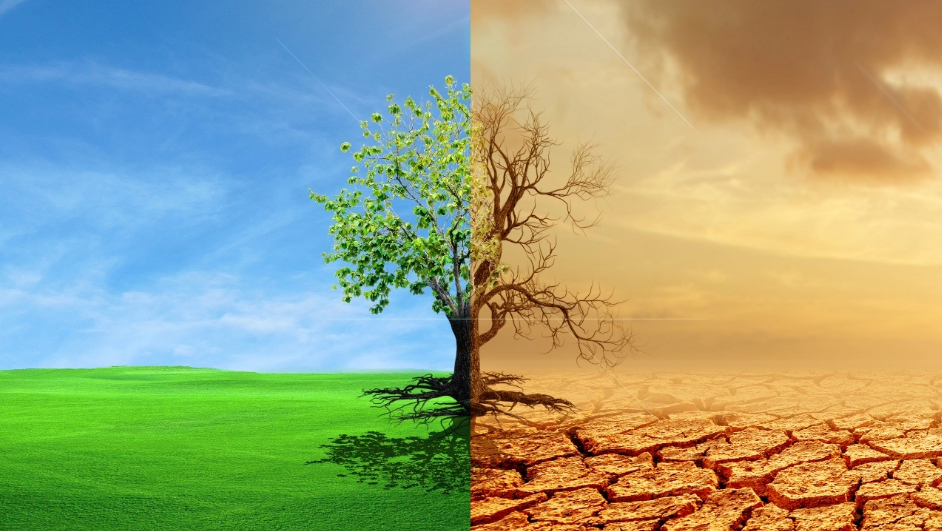Cultivation
Climate change will affect where and how cannabis is grown

Cannabis growers are confronting the same issue that threatens to upend the wine industry and other agricultural-based businesses – shifting weather patterns and climate change.
Those shifts are forcing cannabis growers to rethink how to cultivate their plants.
Shorter growing cycles, for one, will help to ensure the growers can get their plants from seed to sale before disaster strikes by way of early freezes, fires or floods.
Another consideration for outdoor growers is that as climate change warms the planet, some cannabis strains will be better suited to places they have not typically grown.
For example, a recent study in the journal Earth and Space Science showed how parts of Colorado are becoming more arid because of climate-driven changes in stream flows and, over the coming decades, will look more like Arizona.
That could impact how both marijuana and hemp are grown in the future.
As another example, Climate Central, a New Jersey-based, independent organization of scientists and journalists researching and reporting on climate change, notes that as weather patterns shift, some wine regions might become too warm and dry for certain varieties of grapes.
“In the United States, the average growing season temperature (April-October) has risen 2.0°F since 1970,” Climate Central reported.
That could mean vineyards currently producing chardonnay might have to change to growing merlot grapes in the future, according to Climate Central.
The same trend could happen for outdoor cannabis growers.
Trying new genetics
“In the Northeast, we are seeing shorter, warmer winters, less snow, more rain, and it’s harder for us to predict what’s coming in the following seasons,” said Lauren Fortier, director of cultivation for Theory Wellness, a marijuana company based in Stoneham, Massachusetts.
According to Fortier, in the month of July 2021 alone, her cultivation operation received four times the amount of rain it usually gets in an entire year.
That’s pushing her to look at what cannabis strains and genetics will withstand high humidity and heavy rain.
“It’s possible to grow cannabis in any area of the planet,” Fortier said. “It’s a matter of working with fellow farmers and breeders and programs to tailor your genetics to where you’re at.”
For example, shorter-term genetics such as indicas or autoflower might work. She’s also trialing strains that are successful in cold, wet environments such as Maine and Washington state.
Fortier wants cultivars that will put on weight fast but still have heavy potency, cannabinoids and terpenes.
She believes another way to protect against potential crop loss, since her plants are primarily outdoor-grown, is to produce two harvests each year.
A proponent of living soil and sustainable growing methods, Fortier said: “I’m interested in long-term soil development and management so the soil can deal with a large amount of moisture or flood.”
She’s also experimenting with techniques such as hugelkultur, a cultivation technique that builds up a raised bed to help divert water if there’s a deluge of rain but also retain moisture in a drought.
Pathogens and autoflower
With changes in weather come different pests and pathogens.
“We see a different large pest pressure every year, it’s always in flux,” Fortier said.
She recommends growers watch out for the eggs of certain caterpillars, for example.
Fortier also suggests a farm include plants that help to bring in beneficial insects.
In places with warmer springs and windier conditions, pathogens such as powdery mildew are showing up much earlier, said Av Singh, cultivation expert at Nova Scotia-based Flemming & Singh Cannabis.
“Those are the challenges that happen when you get those environmental shifts,” he added.
To lessen the impact of those shifts, including early freezes, Singh advises breeders to aim for genetics that require fewer days from planting to harvest.
“Your best safety should be to have a shorter season,” he said.
To that end, autoflower cannabis with a 75-80-day grow period could be the future, according to Singh.
Although autoflower strains tend not to have terpene and cannabinoid content as rich as other types of cannabis, that’s where breeding comes in.
As breeders experiment with autoflower hybrids, the genetics should only improve.
He also pointed out that cannabis, an annual plant, has evolved in many environments and adapted to a wide spectrum of environments, more so than wine grapes as a perennial crop.
Ultimately, Singh said, growers should try to implement regenerative, organic principles in their cultivation operations to “mitigate those aspects of climate change.”
Learning from mistakes
Cannabis growers should learn from production agriculture when it comes to adapting to climate change, said Bryan McLaren, CEO and chair at Zoned Properties, a real estate development firm in Scottsdale, Arizona, that works with legalized cannabis.
“The cannabis industry as a whole needs to really learn the positive methodologies from industrial agriculture,” he added, including focusing on economy of scale while employing sustainable cultivation practices.
He pointed to how corn and wheat farmers were able to study genetics and improve the hardiness of their plants and, in turn, their yields many years before big, corporate agriculture firms took over seed production.
“(The cannabis industry) yields amazing economic returns and, if done right, hemp and marijuana has an amazing environmental regenerative opportunity.”
Bart Schaneman can be reached at bart.schaneman@mjbizdaily.com.
Source: https://mjbizdaily.com/climate-change-will-affect-where-and-how-cannabis-is-grown/